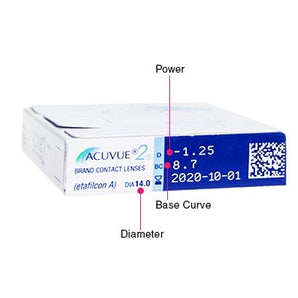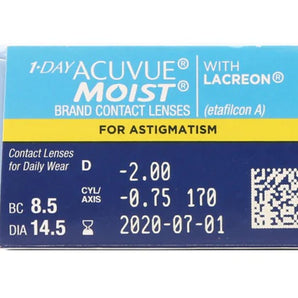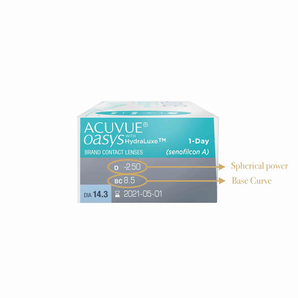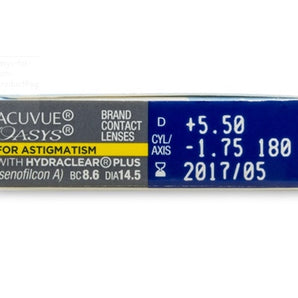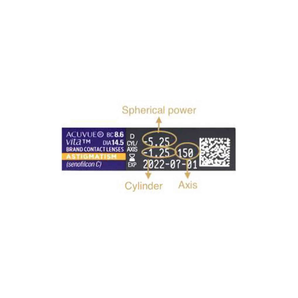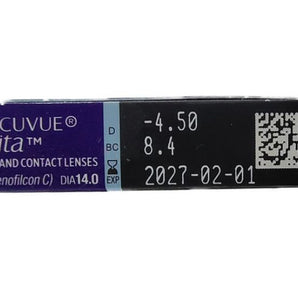Introduction
The iconic eyewear brand Ray-Ban and Facebook’s parent company Meta have teamed up to create a unique blend of style and technology – the Ray-Ban Meta Sunglasses This collaboration utilizes the classic designs of Ray-Ban with the technological prowess of Meta to make smart glasses that are not only stylish but also have advanced functionalities. The first generation of Ray Ban smart glasses, Ray Ban Stories, was launched in 2021 globally, allowing users to capture hands-free moments throughout their day, and building on that, Meta announced the next-gen Ray Ban Meta Sunglasses at Meta Connect 2023. They emphasized the enhancements on camera quality, audio, AI functionality, and more. The initial global response has been very positive; tech stakeholders even label them as a ‘watershed for smart glasses’ due to the enhanced design and vastly improved performance. It is now 2025, and these smart glasses have officially launched in India, marking a significant milestone for Meta in the country that holds the most potential.
The RayBan Meta Smart Glasses integrate the classic RayBan Wayfarer silhouette with an innovative suite of functions. These include first-person photography, video recording, music listening, phone calling, and interaction with Meta AI – all done hands-free. The launch in India marks Meta’s initial hardware introduction in the country, showcasing the company's belief that sleek daily-use smart glasses will appeal to a wide audience. In this blog, we will dig into everything about the Ray-Ban Meta Smart Glasses and their features, pricing, availability in India, and practical details such as battery life, water resistance, warranty, and so much more. Whether you are a glasses aficionado with an eye for the newest technology or a tech-savvy consumer waiting for their next investment, continue reading to discover more about these AI smart glasses.
What are Ray-Ban Meta Smart Glasses?
The Ray-Ban Meta Smart Glasses combine Meta’s advanced AI and wearable technology with the iconic RayBan frame design. They look like stylish sunglasses or eyeglasses but function as a camera, Bluetooth headset, and voice-activated assistant—all seamlessly built into the frame. Developed jointly by Meta and EssilorLuxottica, these glasses let you stay connected and capture moments hands-free without compromising on style.
The glasses sustain Ray Ban's timeless look aesthetics and iconic styles like the Wayfarer glasses. The glasses now have new tech. Each frame secretly houses a 12MP ultra wide camera that takes stunning photos (3024×4032 pixels) and records 1080p videos at 30 frames per second for 60 seconds (3 minutes for other modes), and up to ~3 minutes in other pre-selected modes. A privacy LED glows when the camera is being utilized, enabling other people to see that recording is in progress.
For the audio aspect of it, the spectacles contain open-ear speakers integrated in the arms of the spectacles. These speakers provide closed personal sound. However, the wearer stays aware of their surroundings because of the arms. You can enjoy your music, have laptop navigation reading aloud the GPS directions, receive phone calls, and even sip on podcasts in improved bass and spatial sound. The five-microphone array optimizes the capturing of the speaker's voice devoid of background sounds which improves noise reduction—commanding greater clarity and fidelity on calls.
The smart assistant integrated into the glasses is the real change of pace. Addressing “Hey Meta” triggers the AI that controls the glasses, feeds real time information, aids in troubleshooting, and answers posed queries. The glasses can also give out weather particulars, recognize prominent buildings, aid in cooking, and even explain in-depth what the user is seeing without them even needing to have their phone around. With time, the AI continuously adapts with frequent updates of features the glasses get.
Style-wise, these glasses break the mold of typical gadgets. They come in familiar shapes like the Wayfarer (available in two sizes) and the new Skyler frame—a more universally flattering design with a subtle cat-eye touch, available in Chalk Grey. With over 150 possible frame and lens combinations—including classic G-15 tints, polarized options, Transitions® light-adaptive lenses, and clear or prescription variants—customization is a big draw. They are available with or without vision correction.
Ray-Ban also offers full customization through their “Remix” platform online, letting users choose frame style, lens type, color, and prescription options. This blend of function and fashion is what makes the Meta Smart Glasses appealing as a daily accessory, not just a tech novelty.
To give a quick rundown of the key features and tech specs of the Ray-Ban Meta Smart Glasses:

-
Camera: 12 MP ultra-wide camera capable of 3024×4032 photos and 1080p video (30 fps) recording up to 60 seconds. A white LED lights up to indicate when the camera is recording for privacy.
-
Audio: Discreet open-ear speakers in the temples for listening to music and calls without earbuds. Improved sound quality with more bass and spatial audio support, minimal sound leakage.
-
Microphones: 5-microphone array for voice pickup and noise reduction, enabling clear phone calls and accurate voice assistant commands.
-
Voice Control & AI: Built-in Meta AI assistant triggerable by “Hey Meta.” Allows hands-free control, answers to questions, music identification, live translation, messaging, and more (using Meta’s AI services).
-
Connectivity: Bluetooth 5.3 and Wi-Fi 6 for pairing with your phone and enabling features like direct live streaming. Powered by the Qualcomm Snapdragon AR1 Gen1 chipset for AR/AI glasses, ensuring smooth performance.
-
Storage: 32 GB of internal storage to save photos and videos on the device before syncing. This can hold hundreds of photos or dozens of videos (sufficient for daily use before offloading content to your phone/app).
-
Battery: Approximately 4 hours of active use on a single charge (varies with usage). The included charging carry case can top up the glasses multiple times, providing an additional ~32 hours of use before the case itself needs recharging. Fast-charging can boost the glasses to 50% battery in about 20–22 minutes in the case.
-
Other: Touch controls on the temples (tap to take a photo or adjust volume/swipe), and a companion smartphone app (Meta’s new Meta AI app, formerly Facebook View) for managing settings, importing media, and updating the glasses’ firmware. The glasses are IPX4 water-resistant for daily wear (safe from splashes or sweat). And importantly, they are prescription-compatible, meaning you can order them with prescription lenses or have lenses swapped out to match your vision needs.

When are the Ray-Ban Meta AI Glasses launching in India?
The Ray-Ban Meta Smart Glasses were launched in India in May 2025. As we know, Meta had made an announcement in mid-April that the glasses would be coming to India and a few other countries around that time. This release was preordained for 12th May 2025 on Ray-Ban’s official ecommerce portal and retail stores in India. The general availability date was May 19, 2025 – from that day the Ray Ban Meta glasses were available for purchase online and in physical stores as well. This marks Meta’s debut of smart hardware in the Indian market which is remarkable considering the Indian user statistics for Meta’s applications. The launch timing also aligns with Meta’s wider rollout of new AI features alongside the Meta AI mobile app tailored to synergize with the smart glasses.

Pricing for the Ray-Ban Meta Smart Glasses starts at ₹29,900 in India for the base styles and increases with more advanced combinations of the frame and lens. There are two primary frame designs available for selection - Wayfarer and Skyler - each with different colors and lens types. The starting price of ₹29,900 is valid for the standard Shiny Black Color in both the Wayfarer and Skyler frames (with classic non-polarized lenses). Other variants are slightly more expensive: a Matte Black Wayfarer comes at ₹32,100 and the premium variants such as Skyler in Chalk Grey or a special Wayfarer Matte Black with higher-end lens options (Transitions® photochromic lenses) are priced at ₹35,700. Below is a quick breakdown of the pricing by variant for better understanding:
-
Wayfarer (Shiny Black frame) – ₹29,900 (with polarised lenses).
-
Skyler (Shiny Black frame) – ₹29,900 (base price, standard lenses).
-
Wayfarer (Matte Black frame) – ₹32,100 (with premium lens coating/color).
-
Skyler (Chalk Grey frame) – ₹35,700 Sapphire transition lenses).
-
Wayfarer (Matte Black w/ premium lenses) – ₹35,700 (Graphite Green transition lenses).
The Ray-Ban Meta Smart Glasses start at ₹29,900 in India, with shiny black frames (in Wayfarer or Skyler styles) as the most affordable. Alternate colours or advanced lenses like polarized or Transitions® raise the price up to ₹35,700. Ray-Ban’s typical pricing model reflects these upgrades—premium lenses (polarised or sun-protective) usually cost more than basic variants. Even at the top price, the glasses remain in the premium segment, comparable to luxury sunglasses or flagship smartphones. Crucially, the base price of ₹29,900 matches the global price of $299, as it has been converted to the local price after considering applicable tariffs and taxes.
Purchases can be made on the official website of Ray-Ban India or through select offline outlets. Through partnerships forged by Meta with Luxottica, the parent company of Ray-Ban, these glasses are readily available in many outlets. As these glasses require the Meta application and account setup, store personnel are trained to assist customers through the purchase process, which includes pairing and configuration.
This launch highlights India’s strategic importance to Meta. With over a billion local users on WhatsApp, Instagram, and Facebook, the glasses integrate naturally—supporting livestreams to Facebook/Instagram and voice-command WhatsApp messaging, all hands-free. Meta clearly sees India as ready for everyday wearable AI.
Launched in May 2025, the India release aligns with Meta’s international expansion post-US and EU rollouts in 2023. Indian consumers now enjoy official support, warranty, and retail access—no more relying on imports. The product is fully backed by Meta and Luxottica’s local infrastructure, delivering a complete ecosystem experience to Indian buyers.
Are the Ray-Ban Meta AI Glasses prescription-compatible?
Indeed, the Ray-Ban Meta smart glasses can be used with prescription lenses. Presumably, one of the most important features of the new generation smart glasses is that they can be used with vision correction lenses and not have to be modified. It's possible to use them just like any other glasses. Right from the beginning, Ray-Ban designed the Meta smart glasses to take prescription lenses. This means if you use a pair of glasses for distance or near, you can have the Ray-Ban Meta frames fitted with your required lenses and make use of the smart features without having to wear them over a pair of glasses. This is a helpful feature because it takes care of people’s routine. Most people would want to wear these as their everyday glasses.
When acquiring, you have some ways to get prescription lenses:
-
Purchase with Prescription Over the Internet: The official website of Ray-Ban enables their customers to select smart glasses powered by Meta. Often, customers have the choice to opt for the “Add Prescription Lenses” feature. You are given the option to manually enter your details or upload a prescription, which they will then manufacture the lenses based on. Basically, they will send the smart glasses to you with the prescription lenses already fitted. This service operates within the borders of countries where Ray-Ban offers online prescription services. For the India launch, Mabey's website seems to confirm prescription services. As these are products of Essilor Luxottica, they organize the lens fabrication through their lab's angle dials.
-
Through Authorized Retailers: Purchase the frames of the glasses of smart glasses with plain lenses, and have them fitted with prescription lenses at a Ray-Ban affiliated retailer or optician. Meta does not restrict getting prescription lenses fitted on your Ray-Ban Meta glasses at participating certified retailers. There are several ways this can be done; the retailer sends the frames to a lab and has them cut lenses that are shaped to fit, or if they have the ability in-house, the work is done there. A number of optical shops that stock Ray Ban glasses are more than willing to facilitate the lens ordering on your behalf.
-
Lens Replacement Services: If, down the line, you acquire a new prescription or your lenses become scratched, they can be replaced. Since the frames resemble ordinary Ray-Ban spectacles, the lenses can indeed be removed, and new lenses (installed professionally) can be fitted. There are even third-party vendors coming up, for example, in other countries there are companies that make custom lenses for Ray-Ban Stories/ Meta glasses, but it is best to use the recommended route which is Ray-Ban’s services to guarantee that no damage is done to the smart components. As we’ll discuss in more detail later, the concerns about lens replacement will be covered later, but remember, they can be updated as required.
Can I use them with my iPhone or Android device?
Yes, the glasses work with both iPhone and Android devices — you’ll need a smartphone to set them up, manage content, and access all features. Meta provides a companion app called Meta AI (previously Facebook View), available on both the Apple App Store and Google Play Store. Whether you have an iPhone, Samsung, OnePlus, or Pixel, the glasses will pair easily and function smoothly.
Setup Process & App Requirements
-
Download the Meta AI app and follow the guided setup to pair the glasses via Bluetooth, and optionally connect to Wi-Fi (for updates or live streaming).
-
Your phone should be running iOS 14.4 or newer, or Android 10 or newer — most phones from the last few years meet this easily.
-
A Meta (Facebook) account and active internet connection are required to access smart features and use the app.
How the Glasses Connect and Work with Your Phone
-
After pairing, the glasses stay connected to your phone using Bluetooth Low Energy for basic communication and Wi-Fi Direct/Bluetooth Classic for transferring photos or videos.
-
You can :
-
Sync media from the glasses to your phone
-
Answer calls by tapping the glasses (they use your phone’s network)
-
Use the phone’s internet for AI commands, live streams, and voice messaging
What You Can Do in the Meta AI App
-
Import, view, and edit photos or videos captured on the glasses
-
Share media to social apps or messaging platforms
-
Adjust key settings like:
-
LED indicator light
-
Touchpad functions
-
Battery level tracking
-
Continue conversations with Meta AI inside the app — for example, ask it to describe a photo or edit it later
Using Multiple Devices or Switching Phones
-
You can pair the glasses with different devices over time, but they connect to only one phone at a time.
-
If you switch from iPhone to Android (or vice versa), just unpair and set them up again — the app will help transfer content.
-
During regular use, as long as your phone is nearby (in your pocket or bag), the glasses stay connected and fully functional.
What Happens When the Phone Is Not Nearby?
-
Even if your phone is out of range, the glasses can:
-
Take photos and videos, which get stored on internal memory
-
Run some offline AI functions, like live translation (only if you’ve downloaded language packs before)
-
However, internet-based features like live streaming, calls, or WhatsApp messaging will only work once the glasses reconnect to the phone.
What is the warranty period for the Meta AI Glasses in India?
The Ray-Ban Meta Sunglasses come with a one-year limited warranty in India, covering defects in materials or workmanship from the date of purchase. This means if the glasses malfunction due to internal issues—not from accidents or misuse—they’re eligible for repair or replacement. Covered issues include camera malfunctions, audio or connectivity failures, and battery problems such as poor charge retention. However, cosmetic wear (like scratches) and damage from water exposure beyond the IPX4 splash resistance rating are not included. While countries like those in the EU mandate a two-year warranty, India follows the standard one-year policy.

To claim support, buyers should contact Ray-Ban India customer service or return to the authorized retailer from which they purchased the device. The glasses typically come with a Safety & Warranty Guide (physical or digital) that outlines the claim process. You’ll need to provide proof of purchase—such as a receipt or invoice—to confirm eligibility. Repairs are usually handled through authorized service centers, where, given the advanced tech involved, Ray-Ban often replaces components rather than performing in-store repairs. Though the product is a collaboration between Meta and Ray-Ban, physical servicing in India is handled entirely through Ray-Ban’s local Luxottica-operated network. Meta offers online assistance, but logistical support like evaluation, part replacement, or shipment is managed by Ray-Ban. Additionally, warranty servicing usually includes wiping any stored user data from the glasses to maintain privacy.
Ray-Ban also offers optional protection plans, such as the Ray-Ban Protection Plan for regular glasses, which covers accidental damage for a year at an additional cost. It’s not yet confirmed whether this is available for Meta Smart Glasses in India, but buyers interested in extra protection should enquire. That said, the one-year included warranty already provides solid coverage in case of manufacturing defects. One important note: warranties are region-specific. A unit bought in India is only eligible for warranty within India. Early adopters who imported devices from the US found they couldn’t get local service. Now that the product is officially launched here, buying locally ensures full support under India’s service network.
What is the translation feature on Ray-Ban Meta?
The live translation feature in Ray-Ban Meta Smart Glasses functions like a personal interpreter, allowing users to communicate across languages in real-time. Activated by saying “Hey Meta, start live translation,” the glasses use built-in microphones to pick up foreign speech and convert it into your preferred language almost instantly, with the translated output delivered through the open-ear speakers on the glasses. For example, if someone speaks French, you’ll hear the English translation while the Meta app on your phone can display or play the reverse translation, enabling smooth two-way conversations.
Currently, the feature supports live translation between English and three other languages: French, Spanish, and Italian. These translations can even happen offline, as long as the appropriate language packs are downloaded in advance—making this especially useful for travel. Whether asking for directions abroad or chatting with someone in a different language at home, the feature enables natural conversation with minimal delay. Meta demonstrated use cases like navigating foreign cities or speaking with family members who don’t share the same language.
Technically, this is powered by Meta’s speech recognition and AI-driven translation systems. The glasses’ five-microphone array enhances voice clarity, while the open-ear speaker setup lets you hear the translated voice without losing the original speaker’s tone. This makes conversations feel more natural than using phone apps or translation earbuds.
While the experience is smooth, it’s not entirely invisible—an LED may light up when translation is in progress, and the other person may rely on your phone screen or speaker to receive their side of the translation. Still, this hands-free approach is far more seamless than manually using Google Translate. The only current limitation is the number of supported languages, but Meta is expected to expand this list in future updates, possibly adding widely spoken Indian languages like Hindi.
To use the feature, you either give a voice command or activate translation mode via the app. Once active, a chime or indicator confirms translation is on, and the glasses handle live two-way dialogue with only a second or two of processing delay. Early testers report it feels surprisingly fluid—like having a real-time interpreter whispering in your ear.
Is the Ray-Ban Meta glass waterproof?
The Ray-Ban Meta Smart Glasses are rated IPX4, meaning they’re splash-resistant but not waterproof. They can handle light rain, sweat during workouts, and general moisture from daily activities—but not submersion or high-pressure water exposure. Swimming, showering, or accidental drops in water (like a pool or sink) can lead to damage, especially to components like the camera or speakers. IPX4 means the glasses have sealed components—such as nano-coated charging ports, microphones, and a sealed camera lens—to withstand occasional splashes, but you should still avoid pouring water on them or washing them directly. Cleaning should be done with a soft, slightly damp cloth, keeping electronic areas dry.
Sweat is covered under IPX4, so using the glasses during light workouts is generally safe. However, since sweat can trickle onto the temples or near the mics, it’s best to wipe them dry after extended use. Also, the charging pins and port must remain dry—never charge the glasses unless they’re completely dry, as water exposure can risk short-circuiting. The charging case, being leather-wrapped and containing a battery, is not water-resistant at all and should always be kept away from moisture.
If you're outside in the rain, dry the glasses with a cloth as soon as you can, and store them in a waterproof pouch if necessary. At the beach, avoid placing them on wet surfaces or near waves. In kitchens, they can survive minor splashes while using Meta AI for recipes, but shouldn’t be exposed to oil or dropped into the sink. While the glasses are sturdier than regular eyewear, they’re still electronics, so extra caution around water will extend their life—just like how you'd treat a high-end smartphone.
How long do Ray-Ban Meta glasses last?
Ray-Ban Meta Smart Glasses offer around 4 hours of active use on a single charge, based on mixed usage like music playback, photos, video recording, and AI commands. Continuous media use may reduce battery life slightly, while lighter usage or standby mode can extend it. Users can monitor battery status through the app, and although the battery isn't designed for all-day heavy use, most users find it comparable to devices like wireless earbuds—typically charging them daily. A key strength is the portable charging case, which provides up to 32 additional hours via 3–4 full recharges, making the total usage time roughly 36 hours before needing a wall charge. Fast-charging is also supported: 50% in about 20–22 minutes, and a full charge in 75 minutes, meaning quick top-ups between uses are effective.
The glasses also enter low-power standby mode when not in use, preserving battery while listening for the "Hey Meta" wake command. This mode uses minimal energy, allowing for longer daily use if interactions are infrequent. Regularly docking the glasses in the charging case when not in use not only protects them but ensures they’re topped up and ready throughout the day.
In terms of hardware lifespan, the glasses use lithium-ion batteries integrated into the temple arms. Like any gadget, battery capacity may decline gradually—typically 80–90% after one year and lower after two—but usage patterns help. Since these glasses aren’t used as continuously as phones, battery health is expected to last multiple years. Meta hasn’t published official cycle counts, but hundreds of cycles should be supported.
The frame construction uses high-quality materials—likely acetate or nylon for the front and reinforced plastic or metal for the temples—ensuring the glasses hold up well over time, similar to traditional Ray-Bans. Hinges are durable enough for daily wear, and unless physically damaged, the glasses should last many years. Even if tech advancements bring newer models, the current glasses will still function well for photography, music, and AI interaction as long as software support continues.
The retail box includes a premium charging case, USB-C cable, cleaning cloth, and a quick start guide. The case both charges and protects the device, while the cloth helps prevent lens scratches. Following care instructions—like avoiding extreme temperatures and always storing them in the case—will help maximize both battery life and long-term durability.
Can you replace Ray-Ban Meta lenses?
Yes, the lenses on Ray-Ban Meta smart glasses are replaceable—both for changing the lens type (e.g., adding prescription, switching from sun to clear) and replacing damaged ones. The frames are designed like standard Ray-Bans, meaning the lenses can be swapped using proper tools and expertise, typically by an optician or Ray-Ban service center. These changes aren't meant to be done casually at home, as there are sensitive electronics—such as the camera and sensors—near the upper lens corners. Trained professionals know how to remove and fit lenses without damaging these components or breaking the camera seal.
If you initially bought the glasses with non-prescription lenses and later need prescription lenses—or vice versa—you can absolutely get them updated. Ray-Ban offers official lens replacement services via their website and retailers. Certified stores can assist with lens swaps, using standard lens dimensions like those found in the Wayfarer and Skyler models, which makes the process easier for optical labs. Whether it's clear, sun, polarized, or prescription lenses, replacements can be custom-crafted and professionally fitted.
Technically, replacement involves heating acetate frames or unscrewing parts (depending on the frame style) to remove the lens. DIY tutorials exist, but attempting this at home risks misaligning the lenses or damaging the camera seal, so it’s best left to professionals. If your lenses get scratched or cracked, such cosmetic damage isn’t covered under warranty unless it's due to a manufacturing defect. However, you can get new lenses installed—Ray-Ban may offer lens kits, but more commonly you’d go through an authorized service center for replacement at a cost.
For users who want both sunglass and clear lens functionality, swapping between two sets is possible, but not convenient to do regularly. Instead, Transitions® lenses are a better option—they’re clear indoors and darken in sunlight, eliminating the need to manually switch lenses.
If you’re considering prescription upgrades or replacements post-purchase, ensure there’s Ray-Ban Meta service availability in your area. Some locations might refer you to Luxottica-trained opticians for handling. Since this is a newer product line, not all local optical shops may be ready, but Ray-Ban-affiliated centers will be equipped for proper lens support.
What is the storage capacity of the smart glasses?
The Ray-Ban Meta smart glasses include 32GB of internal storage, used for saving captured photos, videos, and essential operational files like the OS and AI cache. This is comparable to entry-level smartphone storage from recent years and offers substantial capacity for a wearable device. With a 12MP camera, each photo typically takes up 3–5MB in JPEG format, allowing storage of over 5,000 images. Video files are larger—a 60-second 1080p clip at 30fps may consume 50–100MB depending on compression. At the higher end, users can store roughly 300 such videos, though efficient compression or shorter clips may increase this number. Even considering potential future updates enabling 3-minute videos, 32GB remains ample for a full day’s use, unlikely to fill up unless you record extensively without syncing.
The glasses are designed with temporary storage in mind. Content can be offloaded via the Meta companion app, which transfers photos and videos to your phone’s gallery or app library when paired. This frees up space regularly, functioning much like an SD card in a digital camera. If storage reaches capacity, the glasses or app will alert you, prompting manual deletion after backup. Since the device lacks expandable storage (like a microSD slot), 32GB is fixed, but it marks a significant upgrade from the 4–8GB in the first-gen Ray-Ban Stories. Meta increased capacity to better support video use and livestream buffering, with the Snapdragon AR1 chip allocating enough space for both OS functions and user data.
In addition to media, storage may be used for features like offline language packs (e.g., French, Italian, Spanish) or voice assistant data. Each language pack could take up several hundred megabytes, but even with these installed, there's still plenty of room for daily use. While music caching isn’t a core feature yet, such files would also occupy part of this space if enabled later. The Meta app may show available space, or alert users as memory runs low. Regular syncing is recommended not just for space management but also to safeguard your memories across devices.









